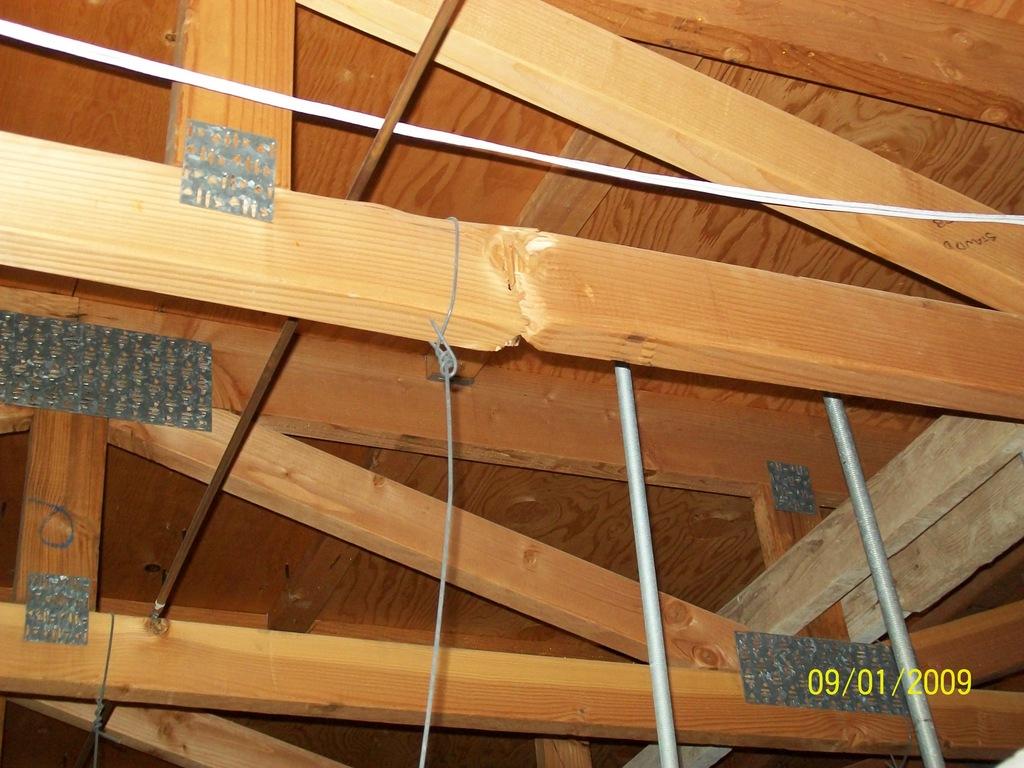The roof of your home is one of its most critical components, providing protection from the elements and maintaining the structural integrity of your house. When a roof truss becomes broken or damaged, it can compromise the stability and safety of your entire roof system. In this article, we will explore the importance of roof trusses, common causes of damage, and the steps involved in repairing a broken roof truss to restore the structural integrity of your roof.

Understanding Roof Trusses
Roof trusses are the framework that supports the weight of your roof and transfers it to the load-bearing walls of your home. These triangular-shaped structures are typically made of wood or metal and are designed to distribute the weight evenly, ensuring that your roof remains stable and secure.
Common Causes of Broken Roof Trusses
Weather-Related Damage:Severe weather conditions, such as heavy snow, ice, or strong winds, can place significant stress on your roof trusses. Over time, this can lead to damage or breakage.
- Inadequate Maintenance:A lack of regular roof maintenance can result in issues going unnoticed and worsening over time. Neglecting to address minor problems can lead to more significant structural damage.
- Water Damage:Roof leaks or moisture intrusion can weaken the wood or metal components of roof trusses, potentially causing them to break or deteriorate.
- Pest Infestations:Insects or rodents can damage the structural components of your roof, including the trusses. Their activity can weaken the wood and compromise its integrity.
Signs of a Broken Roof Truss
Identifying a broken roof truss is essential for prompt repair. Here are some common signs to watch for:
- Sagging or uneven rooflines
- Cracks or splits in the truss members
- Visible signs of water damage or rot
- Unusual noises from the roof during strong winds or heavy precipitation
- Visible separation or detachment of truss components
Repairing a Broken Roof Truss
Repairing a broken roof truss is a complex task that should be left to experienced professionals. Here are the general steps involved:
- Assessment: Conduct a thorough inspection to assess the damage’s extent and determine if it has affected any other structural components.
- Temporary Support: Install temporary support structures to stabilize the roof while repairs are underway, preventing further damage.
- Removal of Damaged Truss: Carefully remove the damaged truss to make way for the replacement.
- Replacement: Install a new truss, custom-built or pre-fabricated to match the existing design, to replace the damaged one.
- Reinforcement: You may take additional measures, such as reinforcing other trusses or the surrounding structure, to prevent future damage.
- Final Inspection:A final inspection ensures that the repaired roof truss meets safety and structural integrity standards.
Conclusion
A broken roof truss repair is a serious issue that requires immediate attention to prevent further damage to your home. Timely repair by a qualified professional is crucial to ensure the continued safety and stability of your roof. Regular roof upkeep and inspections prevent potential problems from becoming major structural issues, safeguarding your investment and your home’s well-being.



Leave a Reply